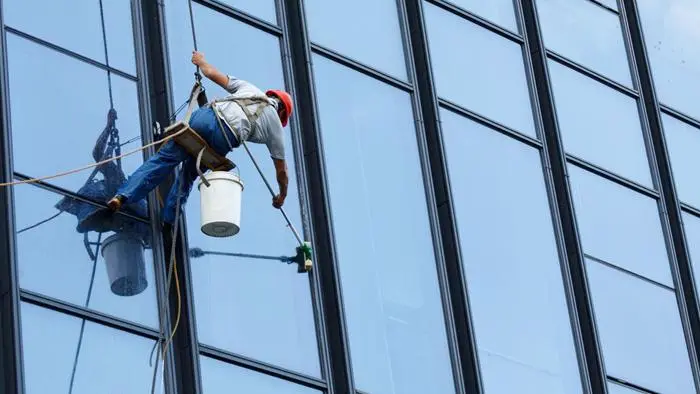What kind of glass is used for glass curtain walls
2024-07-02 Back
There are many types of glass commonly used in glass curtain walls. The following are some common types:

1. Tempered glass: It has high strength and safety. When it is impacted by external forces, the fragments will be in the form of obtuse particles,
which is not easy to cause serious injuries;
2. Laminated (laminated) glass: It is composed of two or more pieces of glass with an intermediate layer such as polyvinyl butyral (PVB) film
sandwiched between them. It has good safety. Even if the glass is broken,
the fragments will be stuck to the intermediate layer to reduce the risk of falling off;
3. Insulating glass: It is composed of two or more pieces of glass bonded together with an aluminum alloy frame containing a desiccant through
a sealant, and the middle layer of the glass is filled with inert gas. It has
good sound insulation and heat insulation properties, and can effectively reduce indoor heating load and ultraviolet radiation;
4. Heat-reflective coated glass: It is made by coating one or more layers of metal or metal oxide film on the surface of the glass. It has appropriate
transmittance to visible light, high reflectivity to infrared rays, and highabsorption rate to ultraviolet rays. It is also called sunlight control glass. It can
ensure indoor lighting while shielding some radiation energy. It also has one-way permeability, that is, it has the characteristics of a mirror on the outside,
while the indoor side does not affect the field of vision;
5. Low-E coated glass (Low-E): A thin film system composed of multiple layers of silver, copper or tin or other metals or their compounds is coated on the
surface of the glass. It has a high transmittance to visible light, a high reflectivity to infrared rays, and good heat insulation performance. Usually it is made into hollow glass for use;
6. Fireproof glass: It has good fireproof performance and can prevent the spread of fire and smoke for a certain period of time;
7. Sunlight control coated glass: It can adjust the light and heat entering the room and reduce solar radiation heat;
8. Vacuum glass: Its structure is similar to hollow glass, but the gas content in the middle layer is very thin, close to the vacuum state, with the characteristics
of low carbon energy saving, sound reduction and noise reduction, and away from condensation;
9. Wired glass: It is made by pressing specially treated metal wire into the inside of the glass. It has fireproof properties. Even if the glass is broken, the internal
metal mesh can support the glass and prevent the spread of flames and powder. It also has a certain degree of anti-theft properties;
10. Mosaic glass: It is a special glass product made of quartz stone, feldspar, soda ash, fluoride and other materials that are processed into square shapes after
high-temperature dissolution. It has the characteristics of small specifications, safety and environmental protection, and a variety of colors and combinations.
In practical applications, the specific type of glass used for glass curtain walls requires comprehensive consideration of many factors, such as building design
requirements, safety performance, energy-saving requirements, cost budget, and local climate conditions. At the same time, relevant specifications also have
specific requirements for the thickness of glass used in glass curtain walls. For example, curtain walls should use safety glass, the thickness of the glass should
not be less than 6mm, and the thickness of the rib glass of the full glass curtain wall should not be less than 12mm. In addition, all curtain wall glass should be
edge-processed to reduce defects and safety hazards on the glass edges. When choosing glass, it is also necessary to ensure that it meets relevant national
standards and quality requirements.




